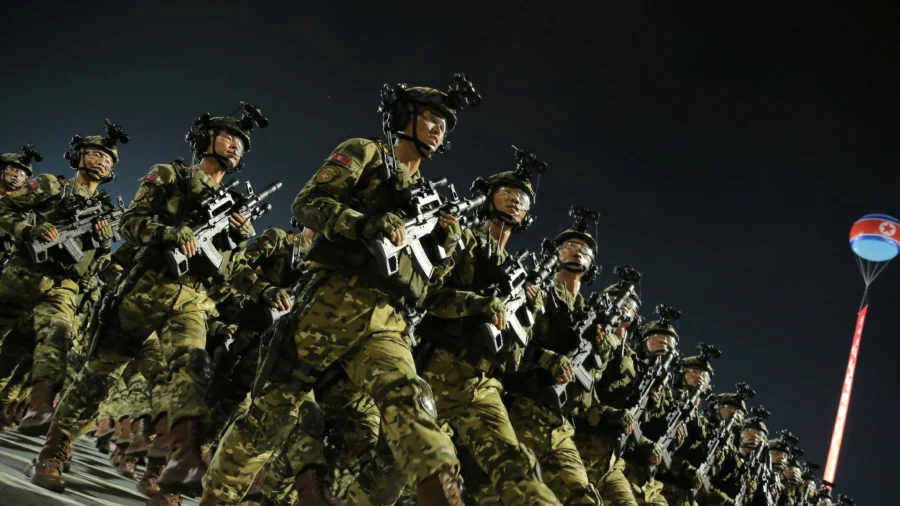Up to 8,000 North Korean troops are in Russia’s western Kursk region and will likely begin fighting alongside Russian forces against Ukrainian forces along the Russia–Ukraine border in the coming days, Secretary of State Antony Blinken announced on Oct. 31.
The U.S. government has been monitoring what they believe to be a contingent of about 10,000 North Korean soldiers that arrived in Russia’s Far Eastern port city of Vladivostok in recent weeks and has since begun to move west toward the Ukrainian border.
Speaking alongside Secretary of Defense Lloyd Austin and their South Korean counterparts at a press conference in Washington on Thursday, Blinken said as many as 8,000 of the North Korean soldiers had already reached the Kursk region and could soon march in force on a swathe of territory that Ukrainian forces have held on the Russian side of the border since early August.
“We’ve not yet seen these troops deploy into combat against Ukrainian forces, but we would expect that to happen in the coming days,” Blinken said.
The U.S. Department of Defense previously assessed the North Korean troops would be employed primarily in an infantry role. Blinken, on Thursday, said these North Korean troops may also assist Russian forces with artillery and drone operations.
“Should these troops engage in combat, or combat support operations against Ukraine, they would become legitimate military targets,” Blinken said.
Pyongyang and Moscow both initially denied the alleged force deployment, but Russian President Vladimir Putin stopped short of a full denial during an Oct. 24 news conference. Asked about the reported North Korean forces in Russia during that press event, Putin cited a mutual defense article in the Russia–North Korea partnership and said “[What] we do within the framework of this article is our business.”
In their Thursday remarks, Blinken and Austin both cast a potential North Korean force deployment in the Kursk region as an indicator of growing Russian desperation and weakness.
Ukrainian forces launched their Kursk offensive on Aug. 6 and have retained control over at least some Russian territory ever since.
The Ukrainian forces may try to hold onto the Kursk territory for as long as possible, in hopes of retaining a bargaining chip for the sections of Ukrainian territory Russia has seized since 2014.
Austin predicted the Ukrainian forces would retain some Kursk territory even with 10,000 North Korean troops coming to Russia’s aid. He said Russia continues to sustain more than 1,200 casualties a day and “this 10,000 won’t come close” to offsetting those Russian losses.
Blinken and Austin both reiterated calls for China to help reign in its diplomatic partners in Russia and North Korea.
Blinken said U.S. officials have had “robust conversations” with their Chinese counterparts about the alleged North Korean troop deployment, and insisted Beijing has a role to play in de-escalating the situation, not only as a partner of Russia and North Korea, but as a member of the United Nations Security Council.
The Secretary of State also raised concerns about possible Russian military assistance that might flow to North Korea in exchange for the troop deployment.
“We’re very focused on and concerned about what Russia might be doing in order to enhance the [North Korea’s] capacities—its military capacity. That too should be of real concern to China, because it’s profoundly destabilizing in the region,” Blinken said.
Ukrainian President Volodymyr Zelenskyy has called for the international community, including China, to more forcefully respond to the alleged North Korean troop movement.
Zelenskyy, on Thursday, also urged South Korea to assist Ukraine. In comments he shared on Telegram, the Ukrainian leader said South Korea has agreed to send advisers to Ukraine. He said he would ask South Korea to supply weapons as well.
From The Epoch Times

